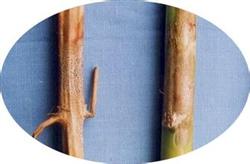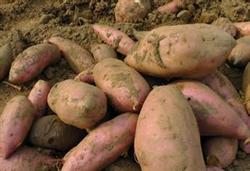How to use drugs to control organic asparagus diseases and insect pests

(1) Common diseases of asparagus include damping-off disease, stem blight and carbon rot; pests mainly include beet armyworm, cabbage moth, cotton bollworm, corn borer, aphid, planthopper, cutworm and white grubs. (II) Control methods In the production process, we should proceed from the whole ecosystem of crop-pest and weed, comprehensively apply various control measures, create environmental conditions that are not conducive to the breeding of pests and weeds and conducive to the reproduction of various natural enemies, maintain the balance and biodiversity of agricultural ecosystems, and reduce the losses caused by various pests and weeds. Priority should be given to agricultural measures. A series of measures were adopted to control pests and weeds, such as selecting pest resistant varieties, non-chemical seed treatment, cultivating strong seedlings, strengthening cultivation management, intertillage and weeding, deep ploughing and drying soil in autumn, cleaning farmland, rotation and intercropping, etc. At the same time, we should try our best to use mechanical catching pests, mechanical and manual weeding measures to prevent and eliminate pests and weeds. 2) Physical measures. Silver-gray reflective film is hung in the field to prevent aphids and viruses, 30-mesh insect prevention net is covered to prevent various pests, black light lamp, high-pressure mercury lamp and frequency-vibrating insect killing lamp are installed to trap adult pests, poplar branch handles and cereal grass handles are inserted in the field to trap armyworms, yellow plates are set to trap aphids, greenhouse whitefly, American leaf miner, etc. 3, under special circumstances, must use pesticides, should comply with the following criteria: must be organic food production allowed to use information pesticide products, in organic food production information pesticides can not meet the needs of plant protection work, the following pesticides can be tried: (1) moderate toxicity of the following botanical pesticides, fungicides, repellents and synergists. Such as pyrethrins, rotenone, tobacco water, allicin, neem, toosendan, neem, sesamin and so on. (2)Release parasitic predators, insects, predatory mites, spiders and entomopathogenic nematodes. (3)Insect pheromones and plant-derived attractants are consumed in pest capture. (4)Mineral oil and vegetable oil preparations, sulfur preparations and copper preparations in mineral element pesticides can be used. (5)With the approval of specialized agencies, limited use of living microbial pesticides is allowed, such as fungal preparations, bacterial preparations, viral preparations, actinomycetes, antagonists, entomopathogenic nematodes, protozoa, etc. Organic synthetic chemical insecticides, acaricides, fungicides, nematicides, nematicides, herbicides and plant growth regulators, as well as some genetically engineered varieties (products) and preparations, are prohibited.
- Prev

Harm and control of asparagus diseases and insect pests
In recent years, with the continuous expansion of asparagus planting area, the damage degree of asparagus disease has become more and more serious, which has caused a lot of losses to the majority of bamboo shoot farmers. Asparagus diseases mainly include: stem blight, root rot, brown spot, stem blight, shoot blight and so on. The common diseases and control measures in the growth process of asparagus are introduced as follows: 1.
- Next

What to do about sweet potato growing after rain?
The early or late of deep ploughing and soil improvement, the speed and duration of tuber expansion are all directly related to the ventilation of the soil. If the soil ventilation is poor, the lack of oxygen will hinder the root root respiration and nutrient absorption, thus inhibiting the root expansion. Therefore, if you want sweet potatoes.
Related
- Where is it suitable to grow horseradish in China? it is expected to see the middle altitude horseradish in Alishan.
- How to prevent tomato virus disease reasonably? (Control methods included)
- Many people like to plant towel gourd on the balcony. What are the main points of this method and management?
- What crops can chili peppers be mixed with?
- Fertilization techniques and matters needing attention in Tomato
- What are the grafting techniques for peach seedlings in spring?
- Harm and control methods of root swelling disease of Chinese cabbage
- What are the pests of sweet potatoes? How to prevent and cure it?
- Symptoms, causes and Control methods of navel Rot in Tomato
- The cause of "Cucumber rotten bibcock" in Farmers' planting Cucumber and its Control Plan

